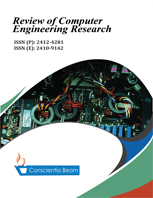A Model for the Safety Risk Evaluation of Connected Car Network
DOI:
https://doi.org/10.18488/76.v9i3.3148Abstract
The automobile industry is preparing for what is now anticipated to be a big transition toward linked and autonomous vehicles. This introduces significant dangers both to individuals' privacy and to the intricate workings of electrical and electronic systems. Currently, the automotive industry has well-established and government-mandated safety risk management methods. They present an improved risk assessment methodology and demonstrate its validity with a real-world use case to facilitate the derivation of safety procedures and safety solutions for automotive integrated devices. This should make it simpler to ensure the safety of integrated vehicles. Some of the significant factors are the accessibility of functional safety to individuals who are not trained in safety and the appropriateness of existing techniques for said functional safety. The methodology that is used to assess the risks posed by properties and capacities includes a risk analysis as an essential component. The next step in the process of managing risks involves determining both the degree of risk and the magnitude of the potential impact. In this step, various different rules and requirements that are already in place are utilized to make any necessary adjustments. After much deliberation, a level of security has been settled on in order to facilitate the formulation of high-level security objectives. Due to the fact that this design has a good convergence with contemporary principles and criteria, it ought to be capable of being adequately suited to the prerequisites of the automotive sector.





